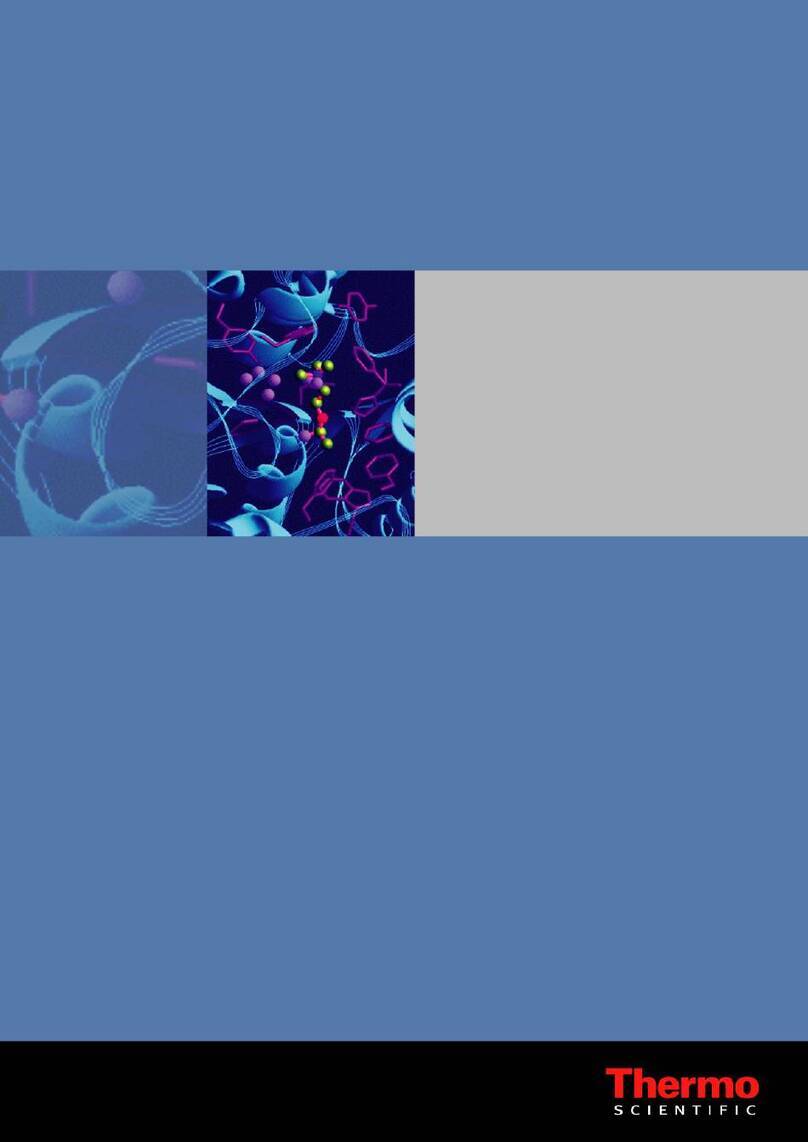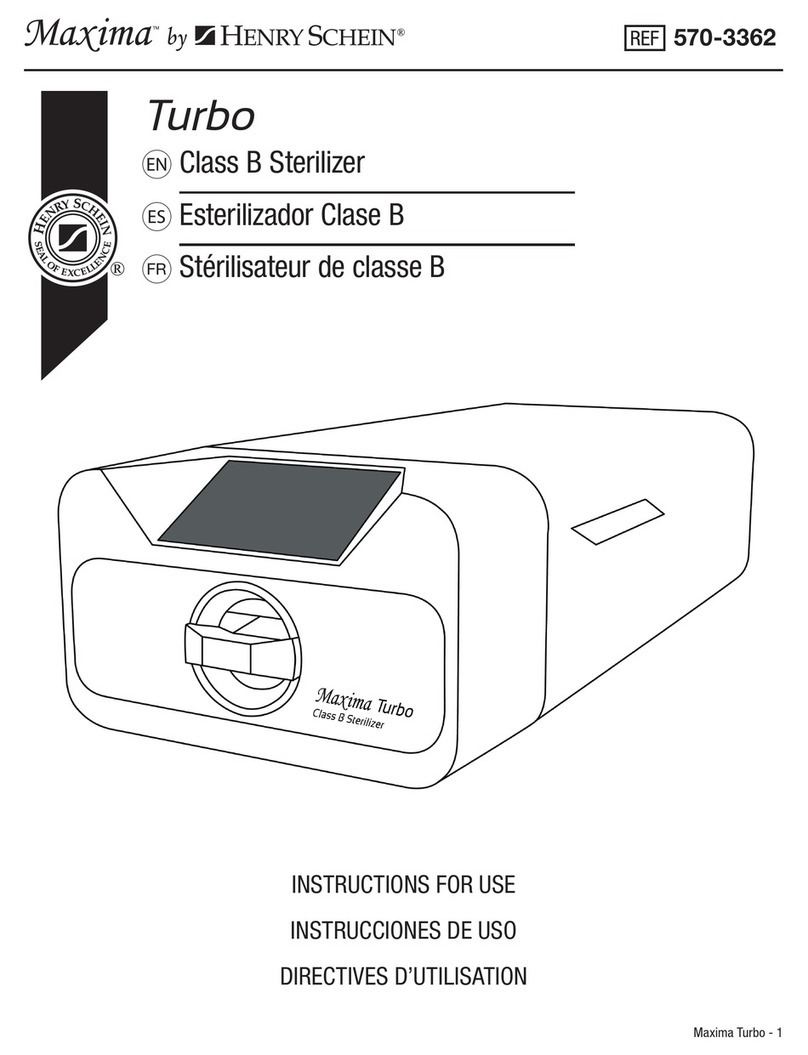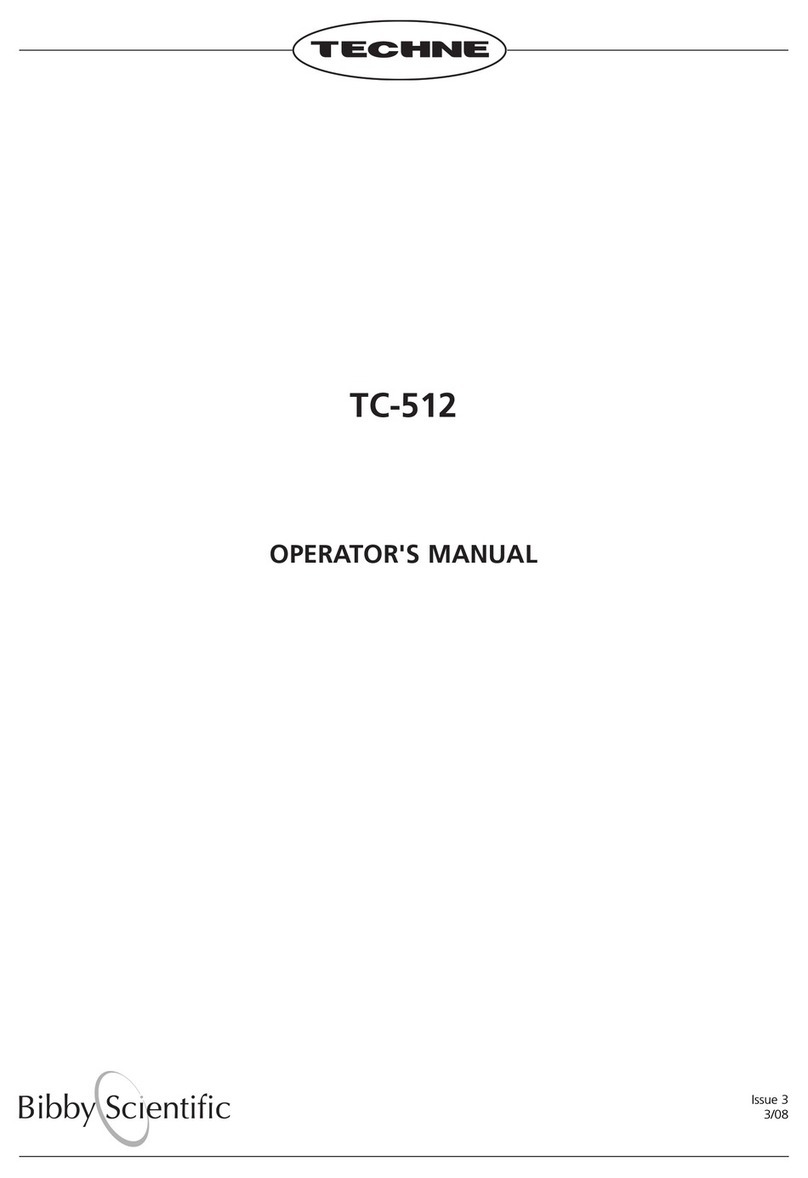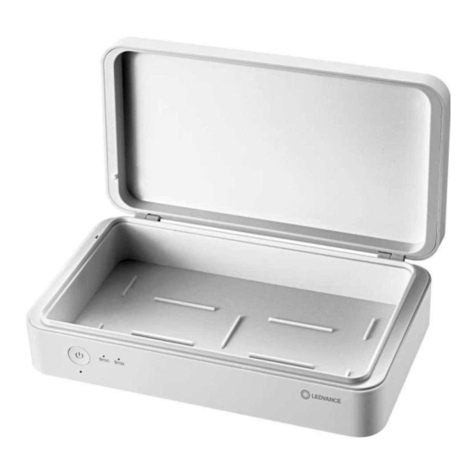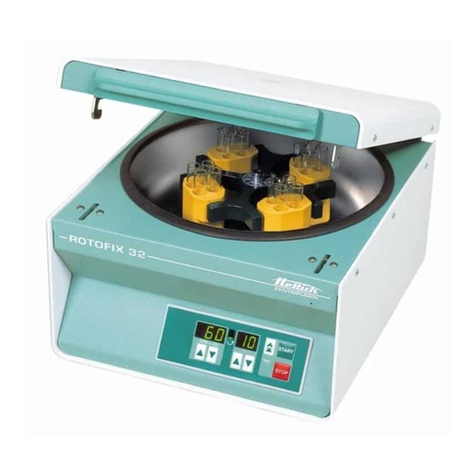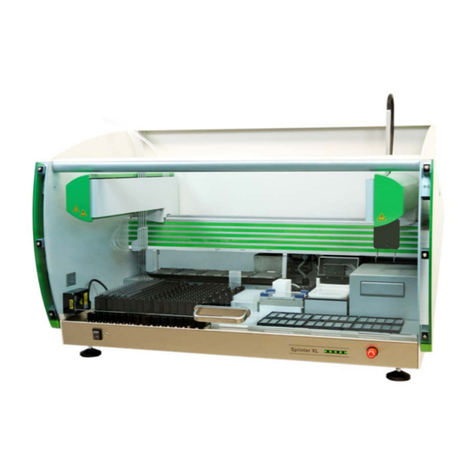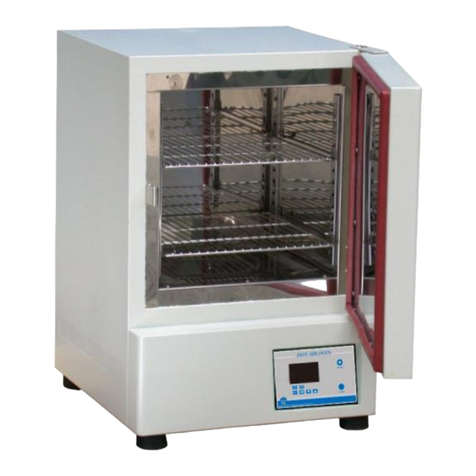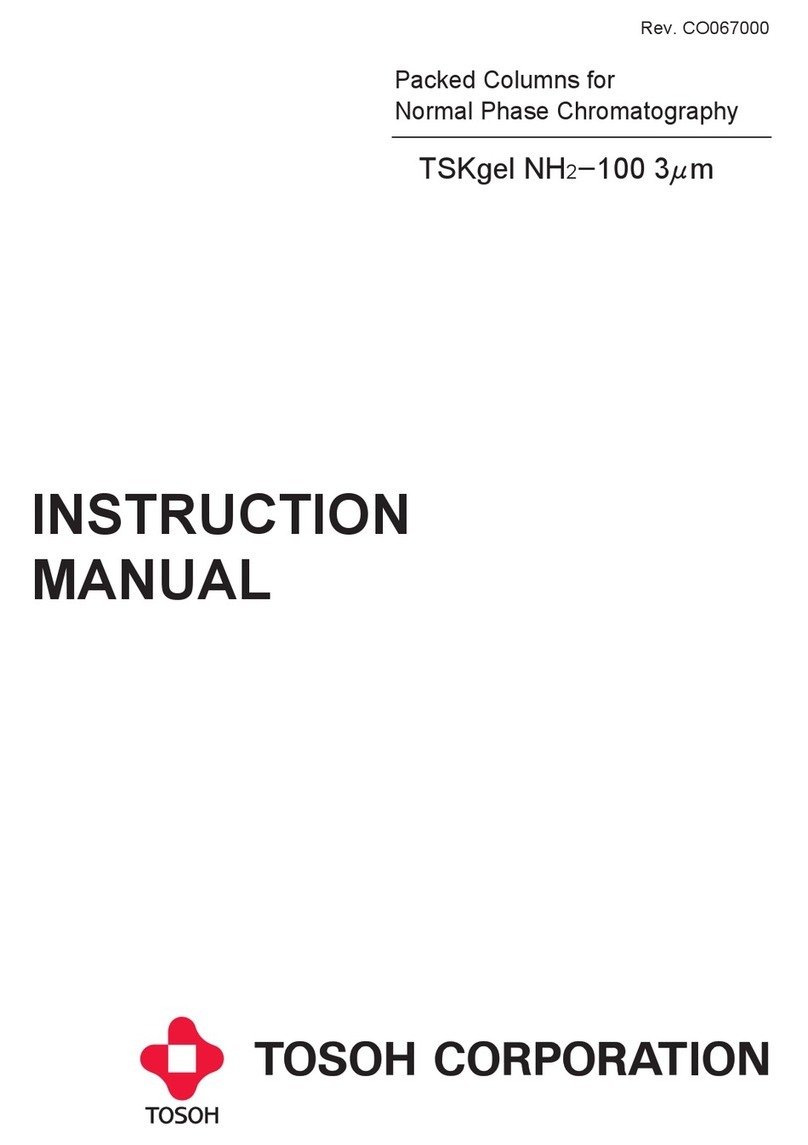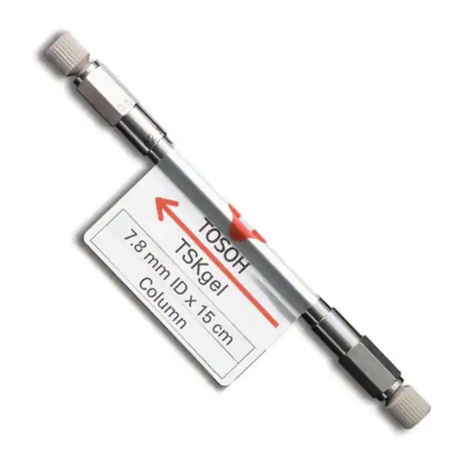
10
of elimination to find out where the problem is. Does the problem still occur
when you inject a standard (see Table 1) and another batch of mobile phase?
If so, take the guardcolumn out of the system and again inject standards. If the
problem is still there, then also take out the column. Directly connect the injector
to the detector. If the problem still persists, then you have determined that the
instrumentation is the problem. Otherwise, the column should be investigated.
Column
The useful column lifetime is a function of factors such as: the cleanliness and
composition of the mobile phase and the sample; the flow rate and pressure
used; and the temperature. Refer to the section above about „Cleaning“ cleaning,
however, is not effective when the column is damaged by irreversible sample
adsorption, channeling, exposure of the packing material to excessive heat, par-
ticle fracturing due to freezing of the mobile phase, or large pressure pulsations.
Column problems due to clogging of the top frit and a depression of the packed
bed may be remedied by following the procedures described below. Also take a
look at one of the troubleshooting guides, textbooks or expert programs that are
on the market.
Clogged frit
The inlet frit may become (partially) clogged by particulate matter derived from
the sample, mobile phase or components in your liquid chromatography system.
If completely clogged, this will result in increased column back pressure. The
pressure does not increase in the case of partial clogging of the frit, although this
can result in peak tailing or splitting due to uneven sample distribution.
Backflushing is often successful in cleaning the top frit. Follow these steps: stop
the flow and let the pressure return to zero. Disconnect the column from injector
and detector. Reconnect the column exit to the injector. Do not connect the col-
umn to the detector! Start the flow and flush the column for at least 30 minutes at
half the standard flow rate. Monitor the pressure to be sure it does not exceed the
maximum. Then, install the column again with the flow going in the direction of
the arrow. Establish that the procedure has resulted in a lower pressure drop or
in improved peak shape in the case of partial clogging. If not, clean and/or replace
the end fitting (available from Tosoh Bioscience) as described below.
To clean or replace the end fitting, use a vise to carefully remove the old fitting
from the top of the column, making sure not to disrupt the gel packing at the col-
umn top. Soak the fitting in a detergent solution for 5-10 minutes or sonicate in
6 M nitric acid. If not successful, replace the end fitting with a new one. Follow
the instructions in the section titled „Installing the column“ to displace air from
the column end fitting when reassembling the column.












